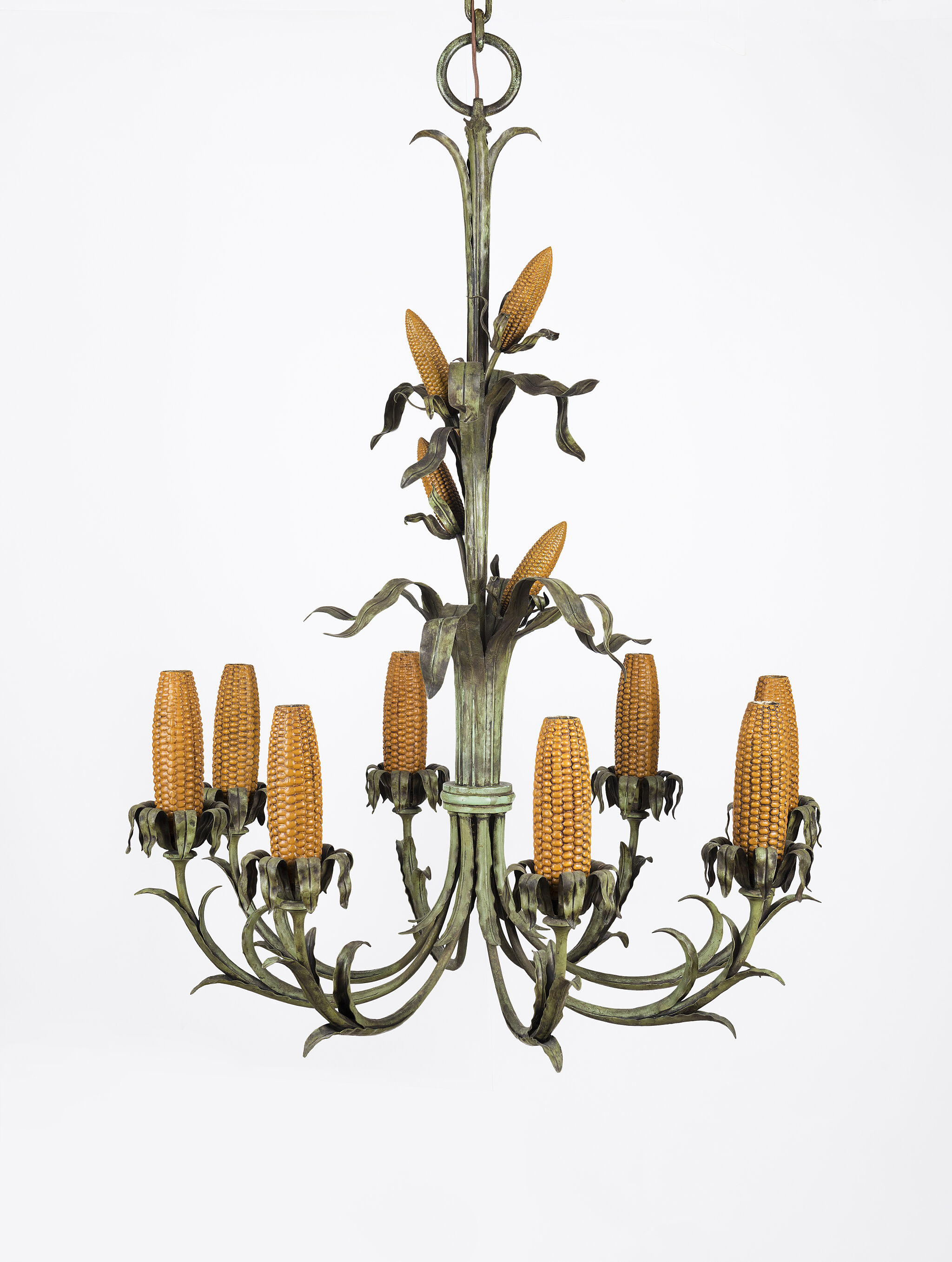Grant Wood: American Gothic and Other Fables | Art & Artists
Mar 2–June 10, 2018
Grant Wood: American Gothic and Other Fables | Art & Artists
Decorative Arts
1
Grant Wood began his career as a decorative artist. Even after he shifted to fine arts, he retained the ideology and pictorial vocabulary of Arts and Crafts, a movement that promoted simplicity of design and truth to materials. To it, he owed his later use of flat, decorative patterns and sinuous, intertwined organic forms as well as his belief that art was a democratic enterprise that must be accessible to the average person, not just the elite.
Wood’s training began early. For two summers after graduating from high school he studied at the Handicraft Guild in Minneapolis before joining the Kalo Arts and Crafts Community, a workshop and training facility for artisans in Park Ridge, Illinois, a suburb of Chicago. In 1914, he opened the Volund Crafts Shop with a fellow craftsman and began to receive recognition for his jewelry and metalwork in the Art Institute of Chicago’s prestigious annual decorative arts exhibitions. Nevertheless, commercial success eluded him and he closed the shop and returned to Cedar Rapids in 1916 to begin his painting career. The decision did not, however, bring an end to his work in decorative arts, which he continued well into the 1930s.
Corn Cob Chandelier for Iowa Corn Room, c. 1925–26
Wood received three significant commissions between 1925 and 1927 to decorate the dining rooms of hotels in Cedar Rapids, Sioux City, and Council Bluffs, Iowa. For each one, he created what became known as an Iowa Corn Room, so called because its decorations revolved around the theme of Iowa corn, subject matter that would come to dominate his art.
Working with the artist Edgar Britton in response to a 1925 commission from hotelier Eugene Eppley to decorate the dining room of his Montrose Hotel in Cedar Rapids, Wood created a number of corncob chandeliers, including this one, as well as a 360-degree panoramic mural depicting a harvested corn field and a frieze reproducing the lyrics of the “Iowa Corn Song.”

